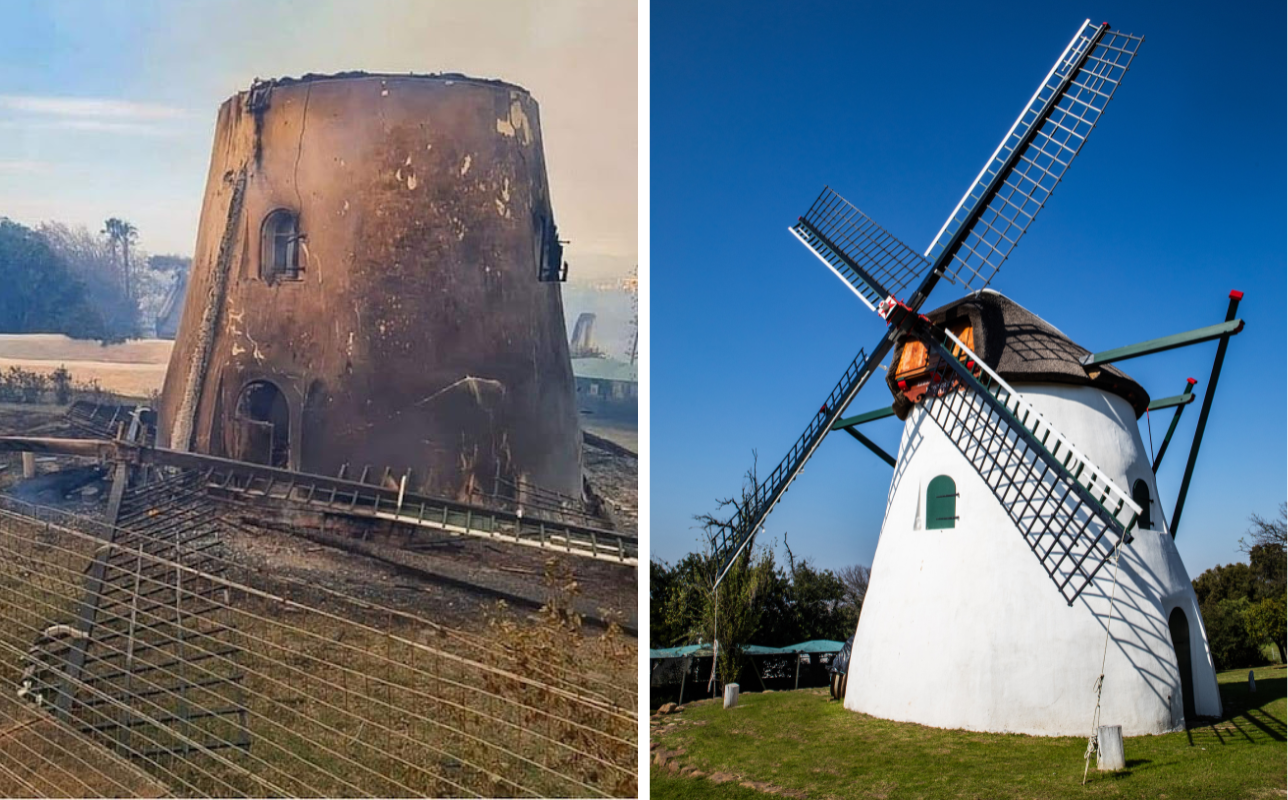
Mostert’s Mill’s reality and restoration – April 2021 vs. September 2022.
On April 18th, 2021, a devastating runaway fire originating on the slopes of Devil’s Peak ravaged Mostert’s Mill, a cherished 200-year-old windmill in Cape Town. Following the tragedy, John Willson-Harris from Gabriel Fagan Architects reached out to JNA Thatchers for a quotation. However, recognizing the significance of preserving South African heritage, we opted to undertake the project pro bono. For this undertaking, JNA Thatchers meticulously constructed the traditional poplar timber roof structure, incorporating “spaansriet” laths, and executed a comprehensive rethatching utilizing our fire-retardant method. Additionally, we installed our cutting-edge JNA Thatchers Manual Drencher System to enhance fire protection measures.
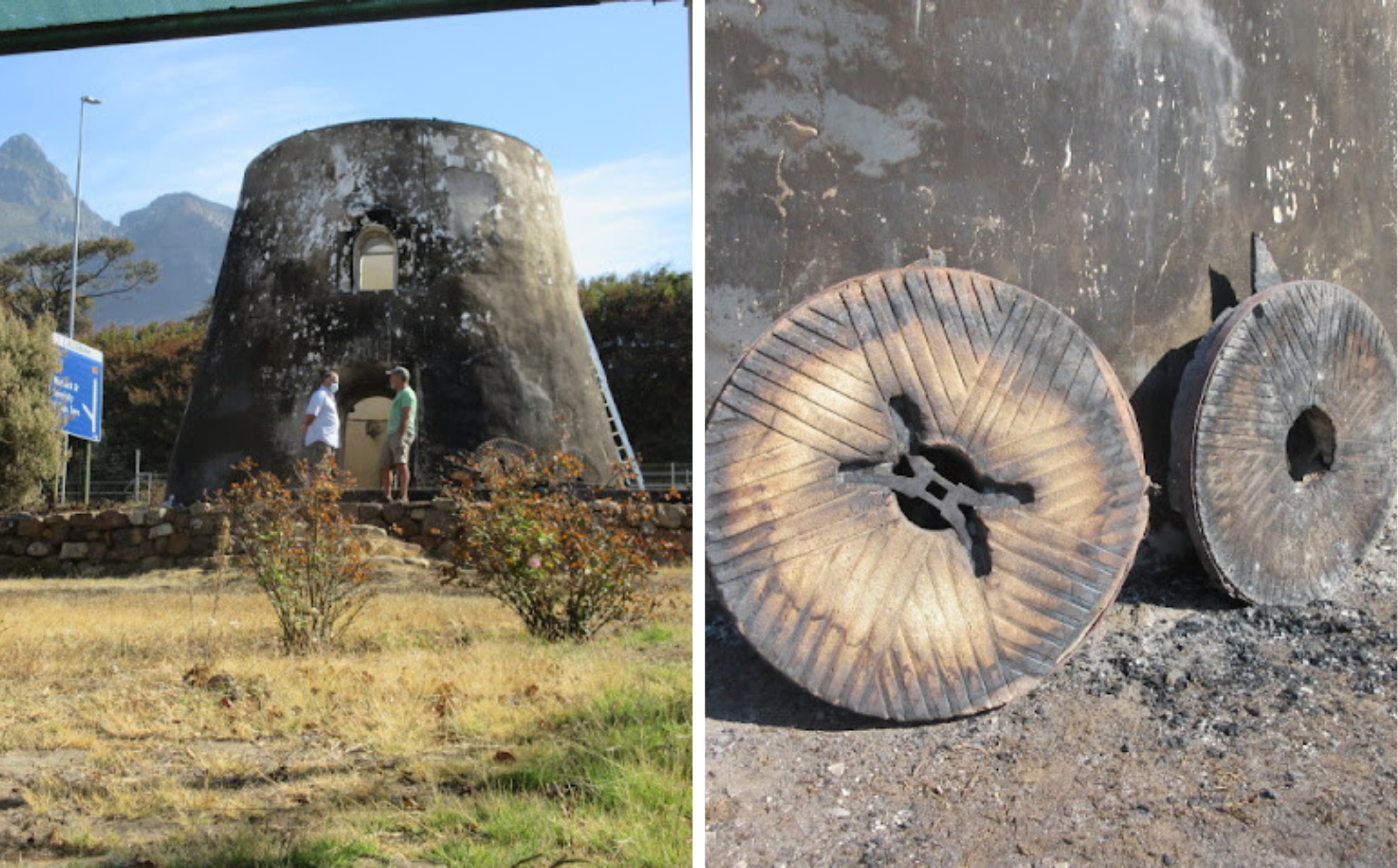
Mostert’s Mill’s reality and restoration – After the fire, many items destroyed by the fire needed to be examined and captured.
Following the fire and a restless night for Chairman Captain John Hammer, the team embarked on a clean-up mission to assess the extent of the fire damage to Mostert’s Mill. Over the course of six days, within concerns about potential rain-induced damage, the team worked tirelessly to cover the structure with plastic sheeting and cargo net, with approval from Heritage Western Cape. During this period, Andy Selfe, a mill specialist, had the pleasure of meeting John Wilson-Harris, Director of Gabriel Fagan Architects, who spearheaded the mill’s restoration in 1995. Thus, the restoration journey commenced, with numerous roles to be fulfilled for the successful completion of the project, an opportunity we were deeply honoured to be part of.
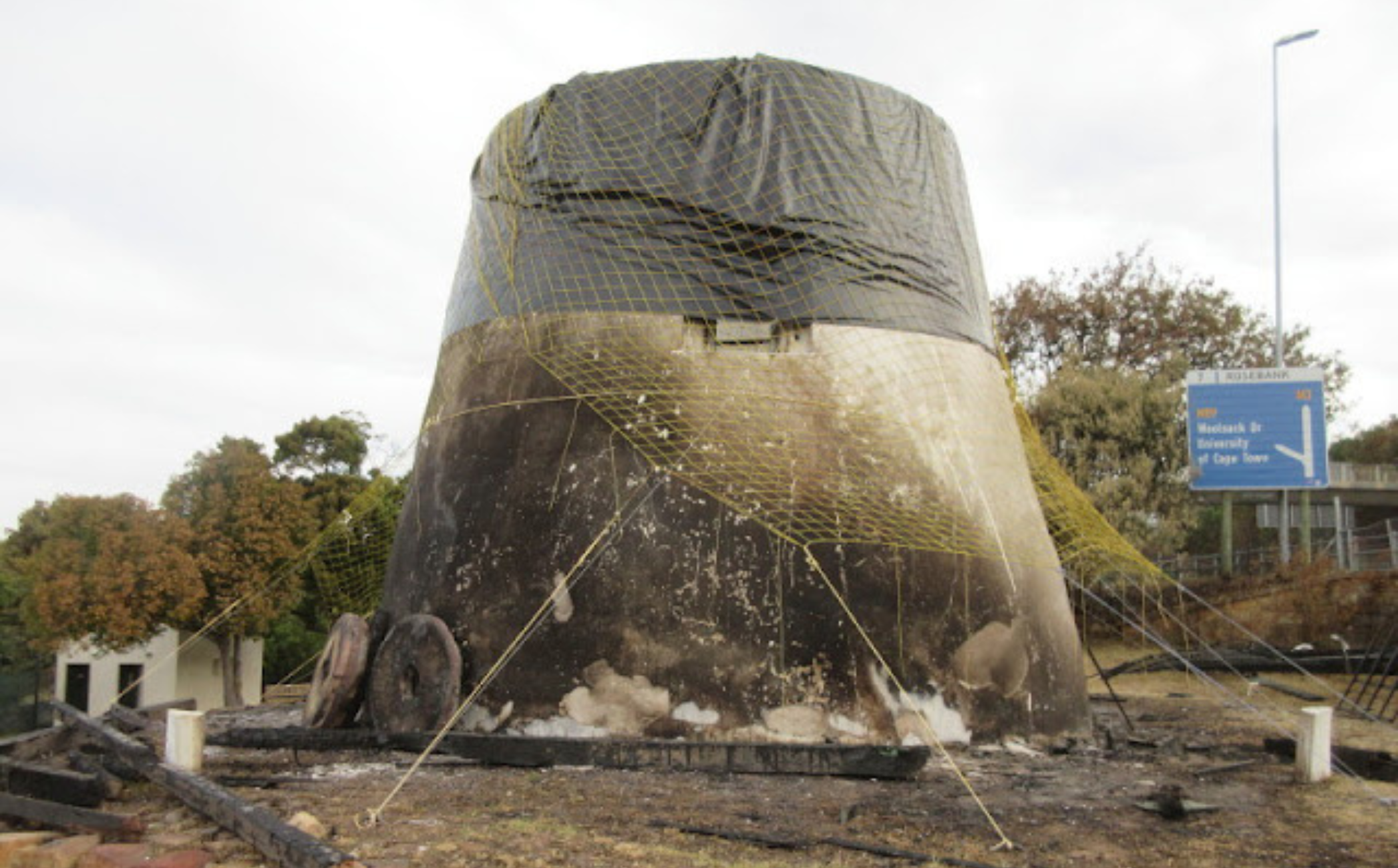
Mostert’s Mill’s reality and restoration – The mill was safely covered in plastic and cargo net with the permission from Heritage Western Cape.
The history of this mill started in the year 1796 on a farm called Welgelegen. The builder of the mill is believed to be Gysbert van Reenen. He was one of the sons of Jacob van Reenen who purchased the farm in 1756. In 1794 Gysbert inherited the farm and that is when he built the mill. He passed away in 1827 and his son-in-law, Sybrand Jacobus Mostert became the next owner. The mill was named Mostert’s Mill during this time. After some years, Cecil John Rhodes bought the farm. The farm Welgelegen (including the mill) and other properties of Cecil John Rhodes was bequeathed to the South African government following his death in 1902. His will became a Private Act of Parliament in 1910. In 1935 the first restoration by the Department of Public Works commenced. The mill operated for a few years, until the WWII years.
“The Vernacular Architecture Society of South Africa started a campaign in 1986 for the restoration of the mill. Out of this campaign a new society – the Friends of Mostert’s Mill was formed in 1993 to continue this campaign. The second restoration was undertaken by the Department of Public Works in 1995 and the same Dutch millwrighting firm was appointed to restore the machinery anew.” – MostertsMill.co.za
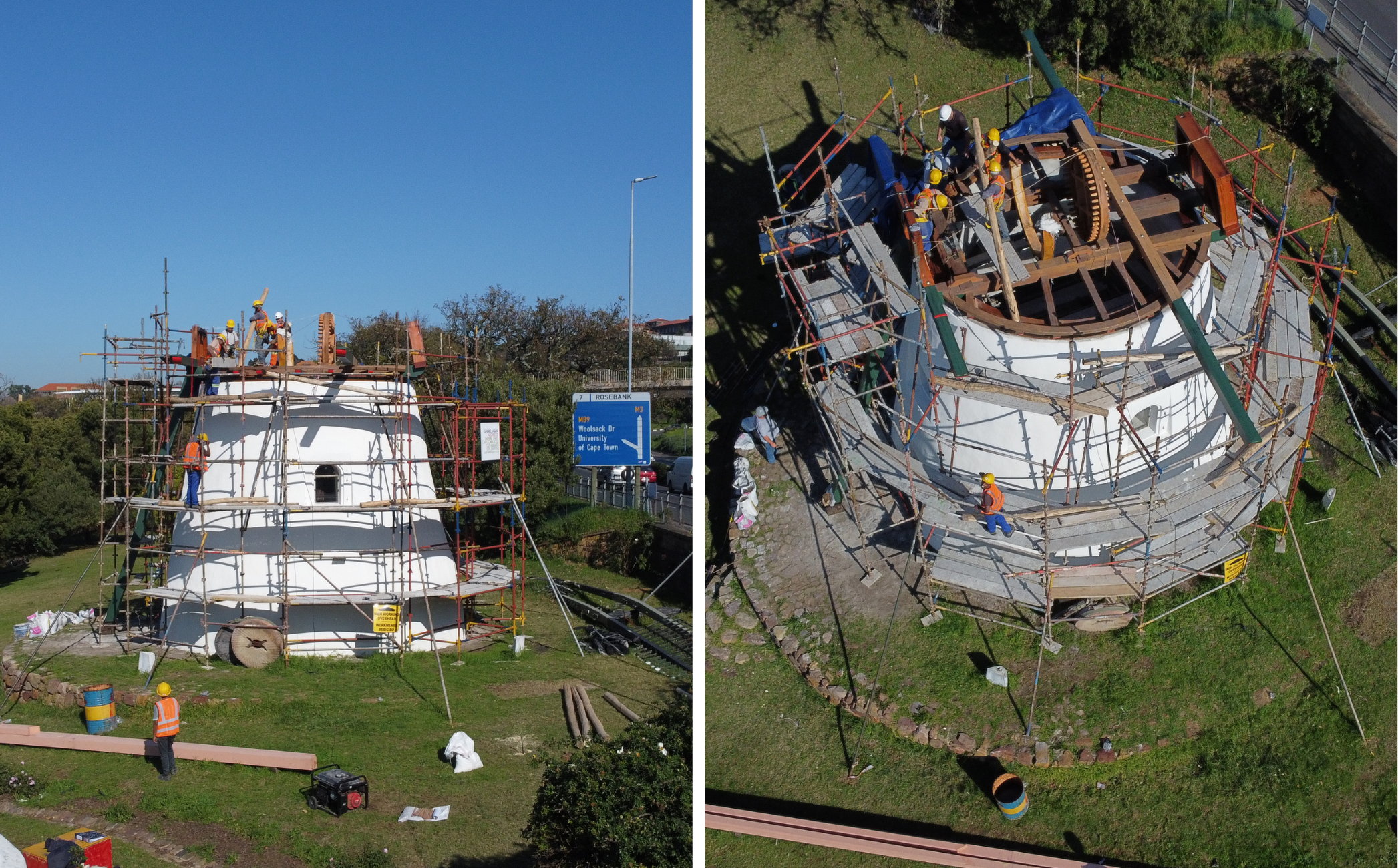
Mostert’s Mill’s reality and restoration – JNA Thatchers progress (June 2022)
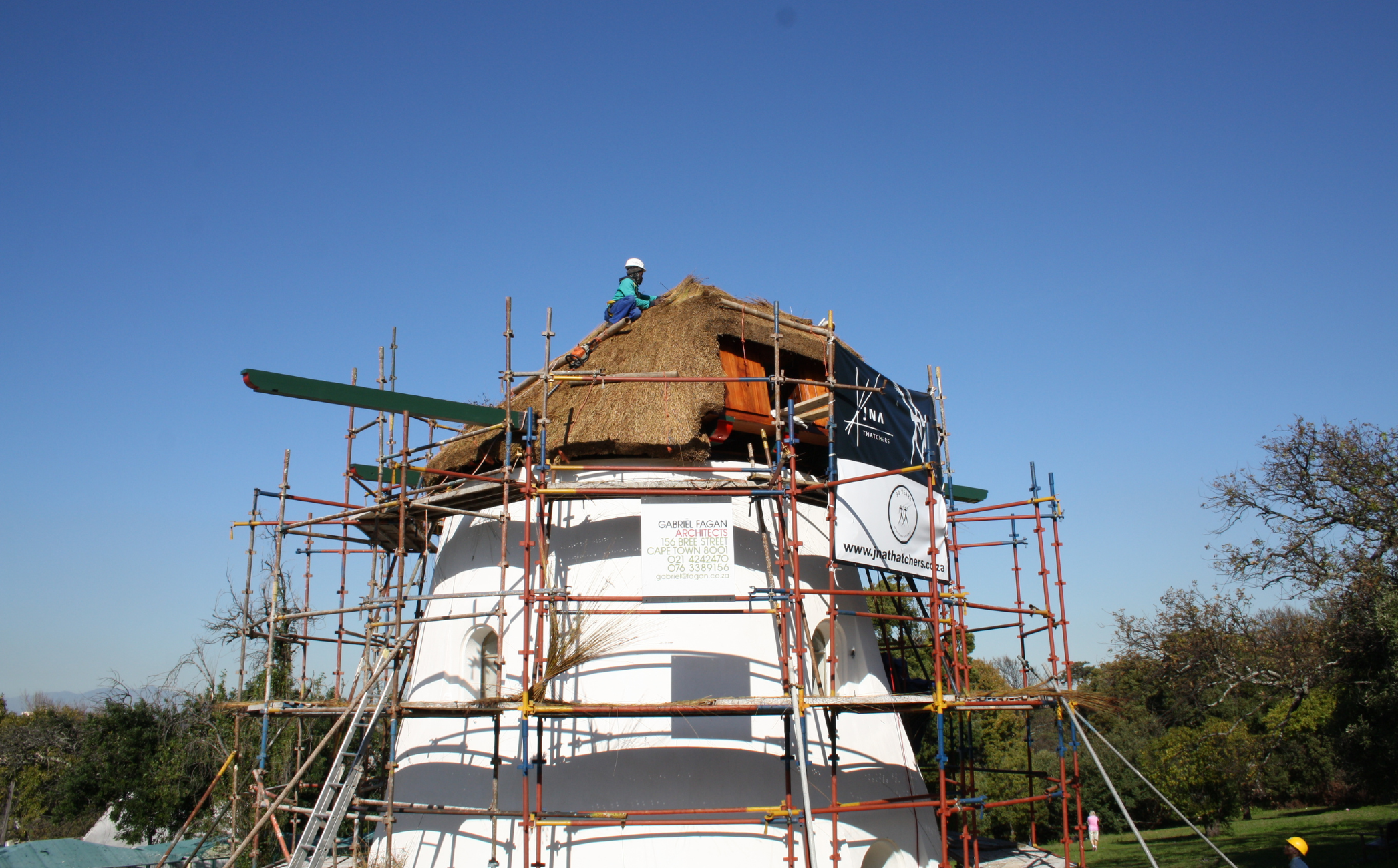
Mostert’s Mill’s reality and restoration – JNA Thatchers progress (July 2022)
Thank you, John Wilson-Harris and Friends of Mostert’s Mill and to all the contributors, for including JNA Thatchers in your restoration journey.
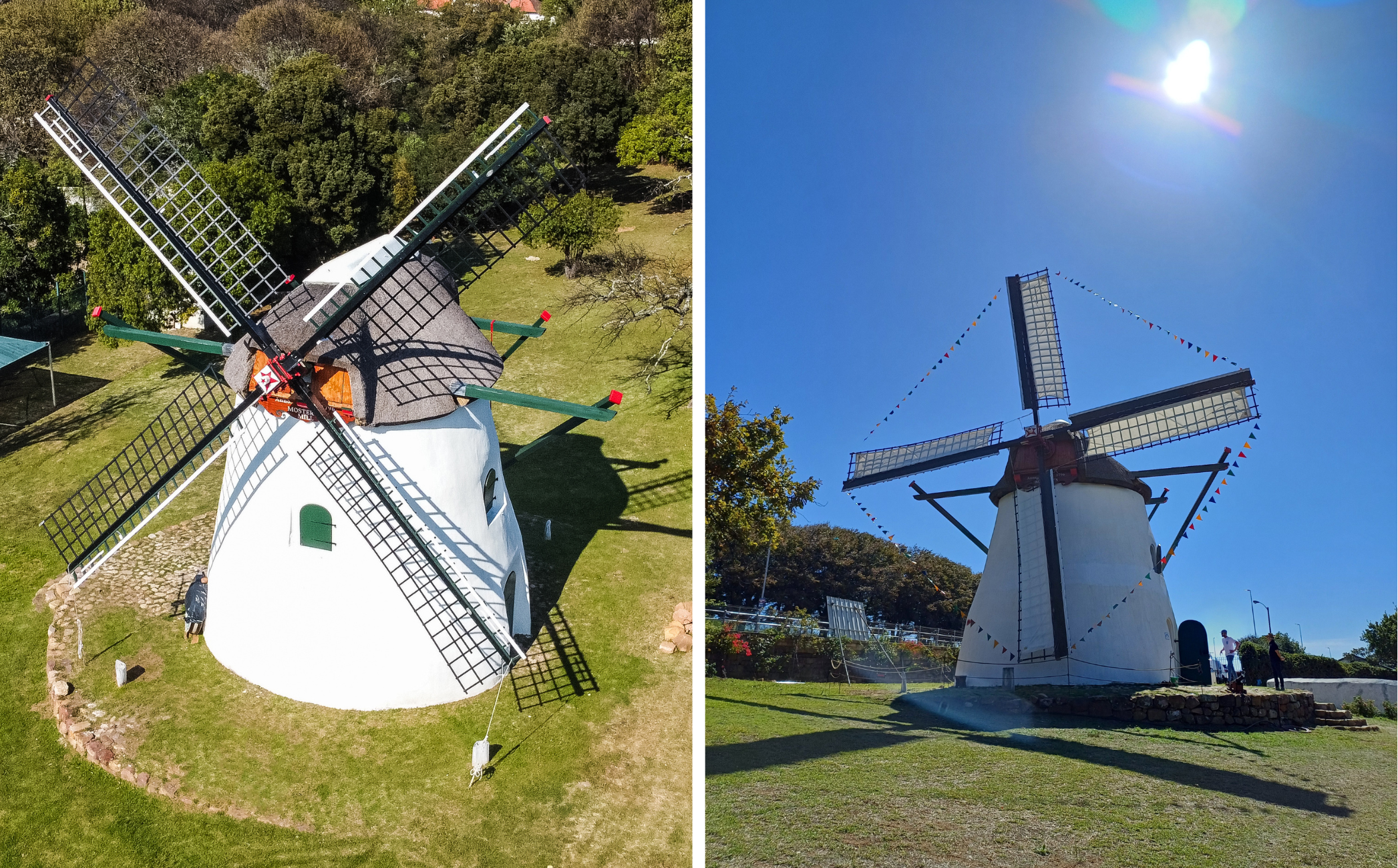
Mostert’s Mill’s reality and restoration – JNA Thatchers progress – project finished (April 2024)
Read about the full restoration project in detail here: www.mostertsmillafterthefire.blogspot.com
Site: Mostert’s Mill, Cape Town | Architect: Johan-Wilson Harris | Mill specialist: Andy Selfe | Materials used: Poplar, “Spaansriet” and Matured Cape reed.



